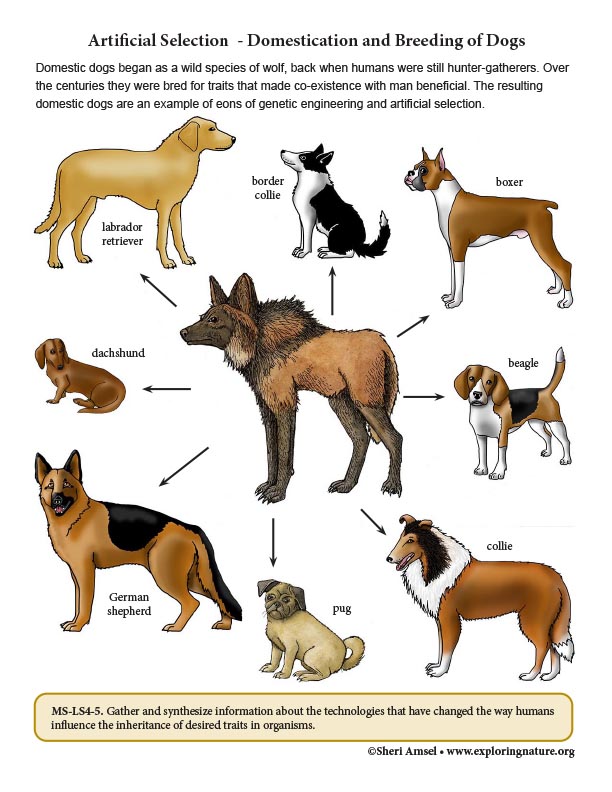

Domestic dogs began as a wild species 20,000-40,000 year ago. Scientists are not exactly sure when or how often they were first domesticated, but it is clear it first happened while humans were still hunters and gatherers and had not yet settled down into agricultural communities. In fact, dogs may be the only species that was domesticated while human were still in their hunter-gatherer phase of development.
DNA studies have shown that the first wolves to begin the domestication process may have been genetically different. One theory is that a genetic variability in their population yielded a less aggressive temperament. Able to tolerate being near human settlements without aggression allowed this population of wolves to scavenge from camp waste areas. This provided a selective advantage. It kept more of them fed, alive and able to reproduce, passing on their milder temperament to their offspring – an inheritable trait, as such. This differential reproduction would have kept the friendly wolf pack thriving and in the proximity of early humans.
The presence of friendly wolves nearby may also have benefited the humans. Considering how territorial wolf packs are, they may have acted as an early warning system for the humans when threats entered the area, such as grizzlies, other wolf packs, mountain lions, even other unfriendly human groups. In this way, the humans and wolves would have developed a kind of symbiotic relationship.
In this same way, the friendly wolves, with physical traits that appealed to the humans, such as curly tails or floppy ears may have benefited them with a closer relationship with the humans over time. Being fed and given a place by a warm fire would have given them an even greater selective advantage. Research shows that these physical changes happen in only a few generations given the selective advantage and resulting differential reproduction.
How this developed into the domesticated dogs will continue to be debated, but we can use “simple probability statements and proportional reasoning to construct explanations” and foster interesting discussions about how early artificial selection played a role. Use the attached worksheet to construct explanations for the domestication of dogs.
When you research information you must cite the reference. Citing for websites is different from citing from books, magazines and periodicals. The style of citing shown here is from the MLA Style Citations (Modern Language Association).
When citing a WEBSITE the general format is as follows.
Author Last Name, First Name(s). "Title: Subtitle of Part of Web Page, if appropriate." Title: Subtitle: Section of Page if appropriate. Sponsoring/Publishing Agency, If Given. Additional significant descriptive information. Date of Electronic Publication or other Date, such as Last Updated. Day Month Year of access < URL >.
Amsel, Sheri. "Domestication of Dogs - Artificial Selection - Critical Thinking (6-8 Grade)" Exploring Nature Educational Resource ©2005-2024. December 14, 2024
< http://www.exploringnature.org/db/view/Domestication-of-Dogs-Artificial-Selection-Critical-Thinking-6-8-Grade >


